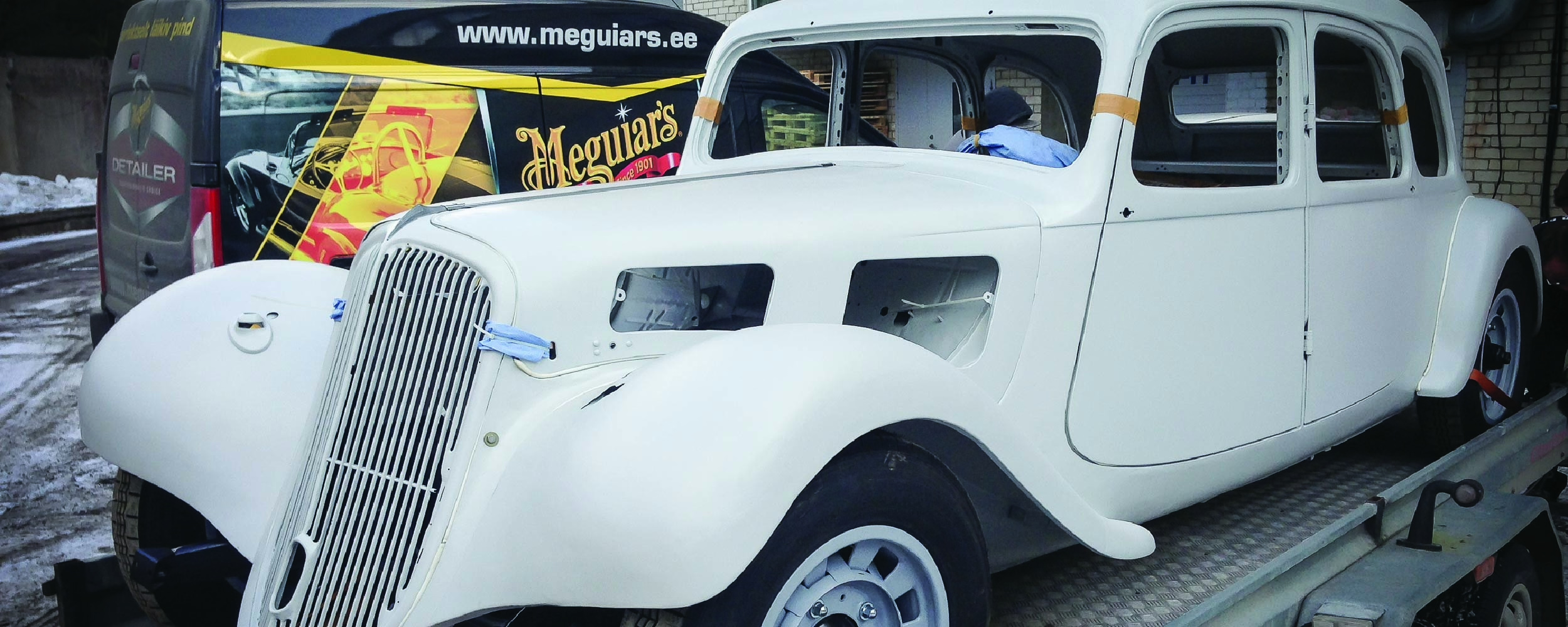
1939
Partial Restoration
Finished
The pre-war Citroën passenger car has so far been the most fascinating and complex project we have ever worked on. While it is not a particularly expensive vehicle, the 9-seat Familiale version makes it a relatively rare find. Very few of these cars have survived, as the extended body and a few engineering flaws by André Citroën’s team caused the bodies to crack and break just a couple of decades after production.
This particular car came from Finland, where it was originally sold before the war, and is the only one of its kind in the country. The owner is a well-known figure in Finnish automotive circles, a Citroën expert who also spent years living in Paris. In his garage, he also has an extremely rare pre-war Citroën TA coupé restored in Paris, which is currently wintering with us. This gave us a chance to study it closely and inspect the quality of French restoration work. While most of it gave an authentic impression, the paintwork left something to be desired — and we believe we can give the owner a clearly higher standard with his next car.
Our first decision after seeing the car in Finland was that we would not take on the job — it was simply too complex and the car was in too poor condition. But the owner was determined. He convinced us that, no matter how long it would take, he wanted the car returned to original condition and made drivable again, as its historical importance was undeniable. Thanks to his exceptional enthusiasm and expertise, we gradually warmed to the idea — and eventually, the car arrived in our workshop.
It quickly became clear that the body was practically broken in half and sagged about 5 cm in the middle. We also grasped the sheer scale of the work — almost the entire lower 30 cm of the body would need to be rebuilt. “We’re basically building a new car,” noted our sheet metal specialist. “We can reuse the roof, pillars, part of the rear section, a piece of the front, and the door frames.” We began by mounting the car on a massive body jig and taking full measurements. Here, the original factory dimensions and body repair manuals, sourced by the owner from France, proved invaluable.
Because the body was so weak that it had no solid reference points, we built a “spine” from heavy steel beams, securing it to the jig. The various sections of the body were then “hung” from this frame, allowing them to be moved, measured, and fixed in place. Once the measurements were correct, we locked all critical points firmly to the jig — and, as if by magic, the doors began to fit perfectly in their openings again.
During body cleaning, we found numerous bullet holes — some neatly repaired with gas welding, others left exactly as they were after the shots. It became clear that this car had actively taken part in Finland’s defensive battles, making it an object of significant historical interest. Before starting repairs, we photographed and documented every battle scar. Such marks are rare on most vehicles, and we considered it vitally important to preserve this piece of history.
08 Aug 2012